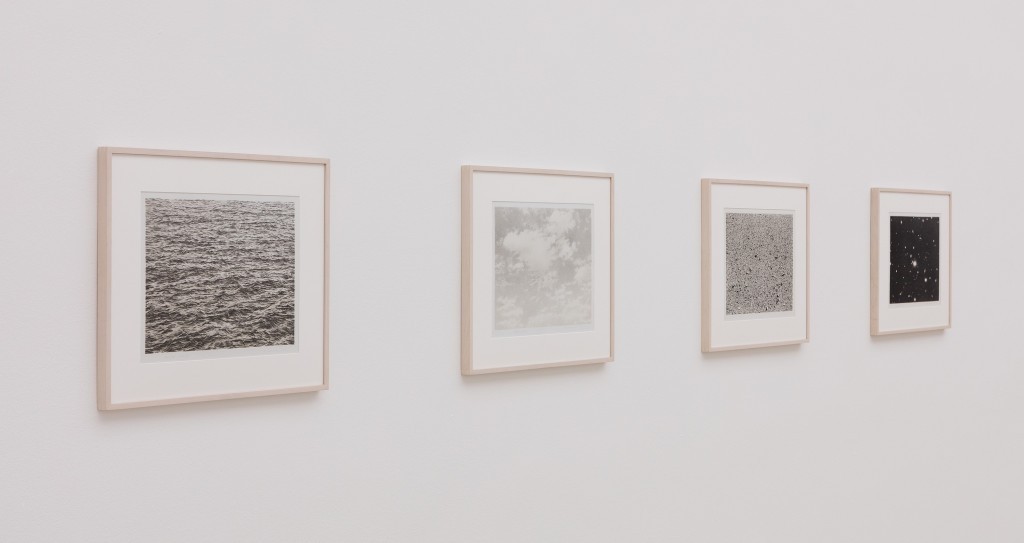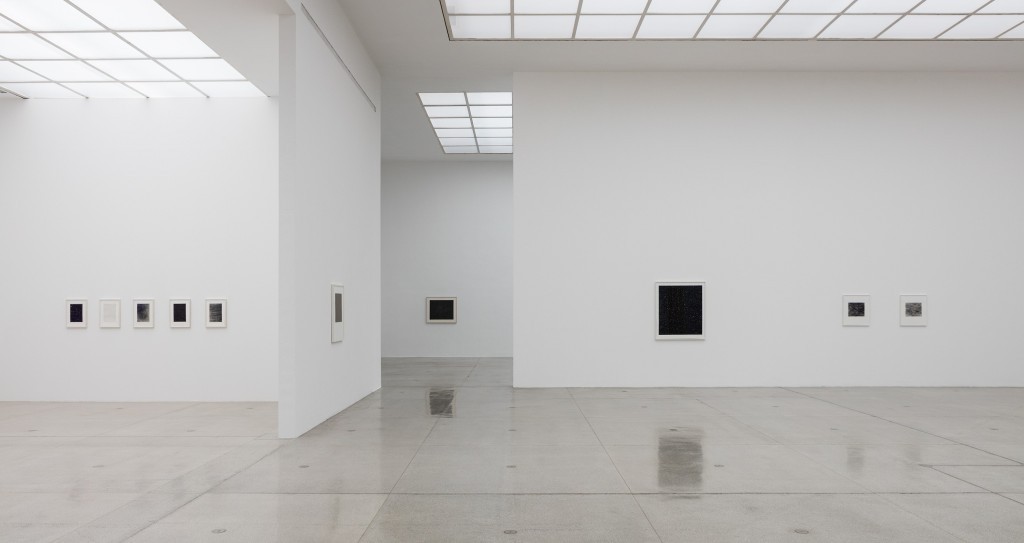Vija Celmins
20 Nov 2015 - 31 Jan 2016

Vija Celmins, installation view Untitled Portfolio: Ocean, Sky, Desert, Galaxy, 1975, Secession 2015, Photo: Stephan Wyckoff
VIJA CELMINS
20 November 2015 – 31 January 2016
Vija Celmins has been known since the 1970s for memorable subjects—seas, deserts, nocturnal skies, spider webs—she renders in a variety of media. Celmins’s retrospective at the Secession is her first solo exhibition in Austria, for which she has selected over seventy works of graphic art from five decades; it surveys this strand of her oeuvre from work she created as a student in the early 1960s to several recent editions that have never been on public display.
Celmins uses images from photographs and found printed matter, stripping the sources of their original contexts and reassembling them in a new medium. The repetitive interpretation of a small number of motifs shifts attention from the image to the material for a probing examination of its specific qualities and effects. Printmaking thus occupies a central position among the many media Celmins works with, on a par with drawing, painting, and sculpture.
The prints, for which Vija Celmins scratches copper plates, incises wood surfaces, and draws on stones, illustrate her abiding interest in the various processes and making things by hand. Her exploration of traditional printmaking techniques and their potential is sustained by her outstanding skills. In the 1970s, she started with lithography, a planographic process that a strong affinity to drawing; starting in the early 1980s, she focused on intaglio processes: etching, mezzotint, and woodcutting. The most prolific genre in her printed oeuvre is the mezzotint, for which white areas are scraped out of the printing plate—the deeper the brighter—to produce a wide range of velvety halftones: an ideal technique for Celmins that allows her to translate her black-and-white photographic sources into subtly nuanced shades of gray.
Celmins’s prints are products of time-consuming craftsmanship; she works hard to achieve results that hide the labor that went into them. One must examine them carefully to discover the rich nuances and appreciate the intimate and patient engagement in which the artist has taken possession of her sources. As Celmins said of Ocean Surface (2000), a woodcut on which she worked intermittently for five years,
“... when you look closer you can see my mark is not so mechanical. I hope it’s a work where stillness and movement, flatness and depth are held together in a delicate balance. I like to hide things behind looks, so that the work looks like a photograph but when you get close you see it’s something handmade and carved from wood: a kind of surprise.” (The Prints of Vija Celmins, The Metropolitan Museum of Art, New York 2002, p. 43)
Celmins’s art maintains a delicate balance between abstraction and depiction, between surface and proportion, between the suggestion of movement and stillness. Their small formats belie their expansiveness. Many of the pictures evoke boundless spaces and actions that have crystallized in novel physically manifest and immutable forms. Structured by the equipollence of multiple elements and without perspectival vanishing points, the pictorial spaces withhold any sense of orientation, confronting the viewer with the total experience of sea, desert, or starry sky. That impression is gently undercut along the margins, where the support medium—paper—comes to the fore; the placement of the printed motif on the sheet is of particular significance. In an earlier interview, Celmins observed:
“Because my images tend to run on, as if they went on forever, they have to be carefully ended. At the edges one breaks the illusion of continuous space and sees the making process and that the work is really a fiction.” (ibid., p. 14)
Vija Celmins was born in Riga (Latvia) in 1938. At the end of World War II, her family fled the country, first to Germany and then to the United States. Celmins lived and worked in Los Angeles from 1962 to 1981 before moving to New York.
Invited by the board of the Secession
20 November 2015 – 31 January 2016
Vija Celmins has been known since the 1970s for memorable subjects—seas, deserts, nocturnal skies, spider webs—she renders in a variety of media. Celmins’s retrospective at the Secession is her first solo exhibition in Austria, for which she has selected over seventy works of graphic art from five decades; it surveys this strand of her oeuvre from work she created as a student in the early 1960s to several recent editions that have never been on public display.
Celmins uses images from photographs and found printed matter, stripping the sources of their original contexts and reassembling them in a new medium. The repetitive interpretation of a small number of motifs shifts attention from the image to the material for a probing examination of its specific qualities and effects. Printmaking thus occupies a central position among the many media Celmins works with, on a par with drawing, painting, and sculpture.
The prints, for which Vija Celmins scratches copper plates, incises wood surfaces, and draws on stones, illustrate her abiding interest in the various processes and making things by hand. Her exploration of traditional printmaking techniques and their potential is sustained by her outstanding skills. In the 1970s, she started with lithography, a planographic process that a strong affinity to drawing; starting in the early 1980s, she focused on intaglio processes: etching, mezzotint, and woodcutting. The most prolific genre in her printed oeuvre is the mezzotint, for which white areas are scraped out of the printing plate—the deeper the brighter—to produce a wide range of velvety halftones: an ideal technique for Celmins that allows her to translate her black-and-white photographic sources into subtly nuanced shades of gray.
Celmins’s prints are products of time-consuming craftsmanship; she works hard to achieve results that hide the labor that went into them. One must examine them carefully to discover the rich nuances and appreciate the intimate and patient engagement in which the artist has taken possession of her sources. As Celmins said of Ocean Surface (2000), a woodcut on which she worked intermittently for five years,
“... when you look closer you can see my mark is not so mechanical. I hope it’s a work where stillness and movement, flatness and depth are held together in a delicate balance. I like to hide things behind looks, so that the work looks like a photograph but when you get close you see it’s something handmade and carved from wood: a kind of surprise.” (The Prints of Vija Celmins, The Metropolitan Museum of Art, New York 2002, p. 43)
Celmins’s art maintains a delicate balance between abstraction and depiction, between surface and proportion, between the suggestion of movement and stillness. Their small formats belie their expansiveness. Many of the pictures evoke boundless spaces and actions that have crystallized in novel physically manifest and immutable forms. Structured by the equipollence of multiple elements and without perspectival vanishing points, the pictorial spaces withhold any sense of orientation, confronting the viewer with the total experience of sea, desert, or starry sky. That impression is gently undercut along the margins, where the support medium—paper—comes to the fore; the placement of the printed motif on the sheet is of particular significance. In an earlier interview, Celmins observed:
“Because my images tend to run on, as if they went on forever, they have to be carefully ended. At the edges one breaks the illusion of continuous space and sees the making process and that the work is really a fiction.” (ibid., p. 14)
Vija Celmins was born in Riga (Latvia) in 1938. At the end of World War II, her family fled the country, first to Germany and then to the United States. Celmins lived and worked in Los Angeles from 1962 to 1981 before moving to New York.
Invited by the board of the Secession

